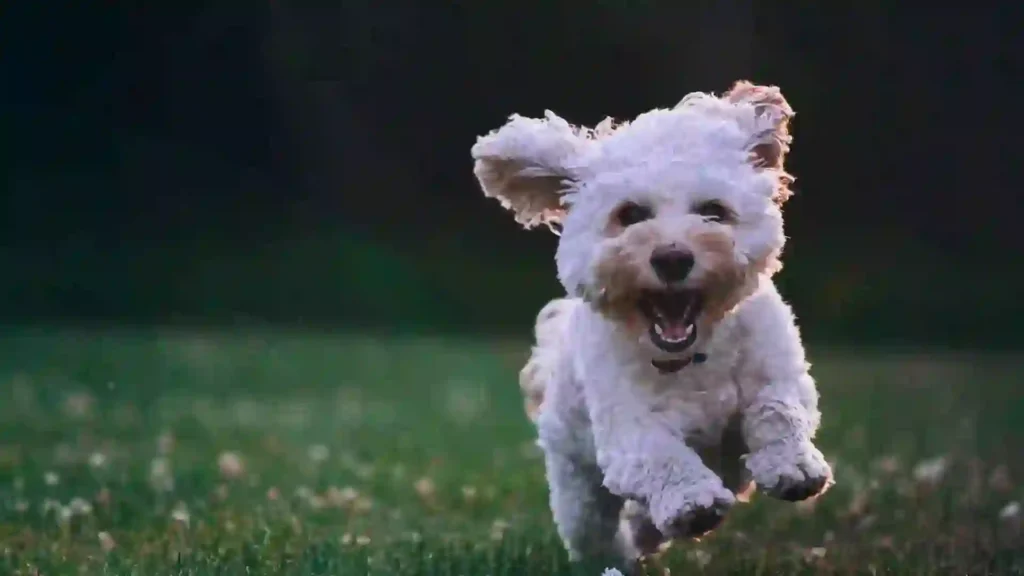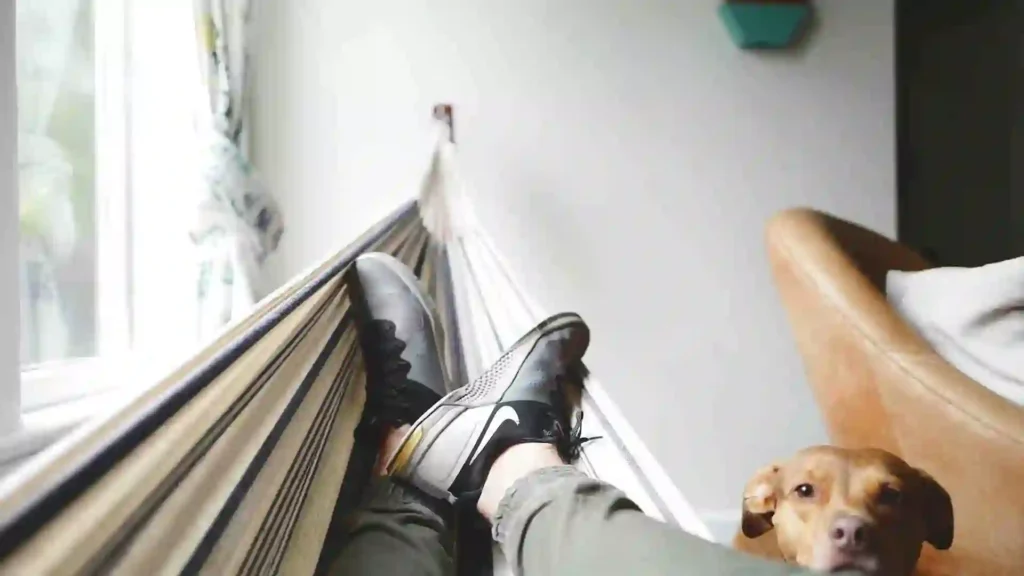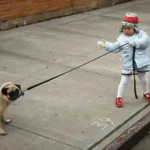Hello to all you wonderful, dog parents! Lady and gentlemen, let’s go talk a little about a real problem our dogs are causing by their continuous whining. Yes, ya know, we also need to cry or be frustrated, but our puppy friends use whining to tell us what’s wrong. So when it comes to that point when you’re not able even to hear what’s going on, it’s the time when it’s necessary to figure out what’s the matter.
This post is based on the main question of why your dog might be complaining more than normally expected and, in particular, how you can help them relax. Again, reasons such as needing more attention and having an illness can occur rashes like these. We will find out what the most usual reasons for this behavior are and suggest some straightforward ways to make your home quiet again. So with that being said, go ahead and make yourself a nice cup of coffee and we’ll get right into the topic!
Why Does My Dog Whine Excessively?

What are the Possible Reasons Your Dog is Whining?
This is why we are going to deeper in the reasoning for your pet may be whining unnecessarily. The noise could be stemming from a million different things. They could be looking for attention, or uncomfortable, or playful, concerned or overjoyed, ragged. It is important for you to know why they may be whining so that you can address the issue.
If it is because your dog is nervous due to a change in the environment, or there was a drastic disturbance in the household dogs will sometimes make even more noise than usual. Alternatively, it might arrive as cute squeaks from a dog that is gearing to participate in their acmes of joy such as one trying out for some sport or when going out to play. To learn and treat your pet, you can handle these small pieces of information following the step-by-step process.
And More Common Reasons
Why are our little furballs maybe whining so much, particularly the endearing puppies? Just as babies weep to communicate their needs, puppies whine to signal what they require. In other words it’s their way of saying, “Hey, I need some love and maybe a snack!”
Generally, we can easily understand the purpose of the dog’s whining. Perhaps they’re begging for a piece of your tasty dinner or demanding to walk out to use the restroom. But sometimes, it’s not always clear the cause of the whining. That’s the time you turn yourself into a doggy detective and read their body signals. Is it just an anxious or excited dog, or is it that he has some problem? The causes may be very similar, but with a little practice and observation, you’ll get to knowing what they mean in no time. Keep on reading we’ll soon share with you some tips which can enable both of you to communicate better.
How Can I Identify If My Dog is Whining for Attention?
They want your attention! Whether your furry friend is also displaying attention-seeking behavior can be judged by the way they act. For example, do they start whining the moment you are engaged in something else? Do they stop as soon as you give them some attention?
Commonly, the need for attention is accompanied by some side movements that can be considered a kind of extra plea. To do that, they will paw you, nudge their cute little noses at you, or stay with you wherever you go in the house, just as if you were their tiny shadow. Not to mention the pitiful looks they give you when they are starving for some time with you or a good hug. It’s the dogs way of saying, “Hey, don’t just ignore me like that!” Thus, next time your pet dog starts whining, make sure to check if there is a need for affection or interaction.
Canine Behavior: Is My Dog in Pain?
Tuning in with our fur babies sometimes might be expressed by whining but that can be caused by the fact that the pet is in a tank. This is an important thing that we need to take into consideration. The fact that our pet is hurt or in a state of discomfort can be observed from the change in behavior. Or sometimes along with whining they raw soldier-of-fortune thighs, shorter legs, and reddish ear tips, them assuming a restless and straight-legged position when they have a luxating patella or even their difficulty to move around the same way as they usually do might appear. There might also be other symptoms that you might notice in your pets when they are in pain but the show of somberness might be mistaken for whining.
If you suspect your pooch’s whining could be due to pain and you can’t tell, it’s absolutely necessary to take it to the vet. They will give you an exact diagnosis and recommend the required treatment to save your little friend from the wrath of a life-long pain condition. Thus, if your dog is wincing and that is not usual for your pet, you are questioning whether the pain is a reason for his discomfort, then you should definitely not think about it and consult with professional healthcare providers. The best happiness and health of your puppy are worth it!
For Communicating Excitement or Maybe Showing Boredom
Your dog is likely overjoyed and wants to get your attention if it is jumping and weeping with a very high pitch at a very fast speed. It is their way of using that extra energy and, of course, it is a signal for you to notice them as well!
Why don’t we move on to the boredom whining now? In these cases, it is usually accompanied by a very overdramatic “woe is me” sigh and a combination of baying and grumbling that requests some help.
Understanding the various whines is vital in identifying their needs, whether they want playtime or some extra loving care. Look out for the next set of tips on caring for your pet so as to keep them happy and free of whining!
So How to Stop Dog Whining?

1. Common Signs That Your Dog Wants Something
All dogs are so cute with their gestures and that’s pretty much is what they are looking for. For instance, they may whine, run where they want to go, bark or just turn their head in the direction of the door when they need to go out.
They can even select and bring you their leash or do the tricks you have trained them to so that they can “talk” to you. The target for you as a pet owner is to observe your puppies’ vocalizations and at the same time to familiarize yourself with their actions and sounds. So, when they are not verbal, you can still be able to hear correctly from the signals and the body language at that particular time.
Your dog gives you a sign move among them to tell you he needs to go out, thus, you should observe these. However, think, too if there are sounds or moves they are doing that are pertinent. I should add though there are some hints if you are a better owner and thus a better companion to your pet. Stay tuned to our upcoming education articles about canine behavior.
2. More Feelings And How to Control Them
If your dog is fearful, anxious or stressed, it’s like being a detective to find out the real reason for this behavior. Dogs may have different kinds of fears and phobias. If you can figure out the source of the problem, you might be able to work on training and desensitizing your canine friend that will allow them to eventually get over the fear.
Now, let’s talk about those puppy dog eyes and that adorable whine. It is very strong to give in always, but not try! If you usually give in to their whining, they will learn that whining gives them what they want. When the acquired habit of problem whining as they grow up is one of the consequences. It is definitely not easy to do but being strong will help you not be left with a whiny adult dog.
Hence, be powerful, and along with some tenderness and persistence, you’ll make your pet become a happy and balanced dog!
3. Training Tips to Make Him Stop Crying
The trick is teaching your four-legged buddy good behavior that both physically & mentally engage him so he stays in shape.
Work with simple commands (like”sit” and “stay”) with your dog. Using positive reinforcement, such as yummy treats and praise, can help distract a dog from whining.
Regular practice is the game-changer. Make sure to allow your canine to have plenty of playtime, be it playing with them in the park, going out to jog with them, throwing the ball for them, or other dog sports. This relieves that additional energy and makes the boredom-caused howls lower.
However, crate training may also be a good stealing from a parent. A crate is a safe, warm, and comforting setting for your dog where he can feel safe and relaxed. That’s their personal spot away from the rush and buzz.
Then again, introduce some sessions that are educational between the others; keep the playtimes colorful and abundant and leave your little guy a place where he can snuggle in and take a nap. With understanding and love, you will help your four-legged friend to overcome the whining and the tail wags will be back!
4. When Should I Consult a Veterinarian?
Your furry friend’s run-away separation anxiety is a panic condition that should not be enhanced by the use of the simple methods of training. The very first thing one has to do on recognizing anxiety disorder in a dog is to consult a vet. It is true that anxiety can sometimes be a side effect from the existing medical condition, so it is important to consult a professional.
Visit a reliable vet who can make an accurate diagnosis and then suggest a treatment plan or behavioral therapy if the problem is not that severe. Therapeutic does also counseling if the severe cases of separation anxiety won’t subside. Remember that the support and involvement of the vet will help your buddy get out of its misery.
Tell your vet everything that’s going on with your dog and let them know about your concerns. Make sure you work on the problem together and come up with possible solutions. You may suffer from a type of depression or anxiety in a parallel way with your dog which you unconsciously project on the dog and subsequently worsen the condition.
Therefore, if you are losing your mind being around a dog with an unexplainable behavior, make sure you ask for professional help. With the right solution, a pet can reach a state where they don’t feel frozen when they are alone. They deserve to feel safe and calm.
5. What Should I Do If My Dog is in Pain?
If your dog is whining, whimpering, or just being restless, those can be signs that your dog is not feeling well. Physical symptoms e.g. limping, swelling, or visible wounds can also be clues to the pain of your pet.
Let me start with the fact that if you feel the pet is suffering from pain, the first thing you need to do is bring it to your vet. They are going to be able to analyze the animal’s appearance and recommend the treatment needed. For the time being, just make sure your little one is as comfortable as possible. Put them on a nice, warm, and cozy bed to relax and let them drink as much pure water as they can.
Avoid administering other human medications that could have a serious outcome in dogs. Follow only the meds your vet prescribes for the temporary relief from pain. For your part, try to be calm around your dog and do not let him play any game that can provoke the hurting more.
Do not forget that your vet can become your companion in this case, so, do not feel shy about asking him. With the right care and kindness, you can give your pet the opportunity to return back to his cute self in no time.
Conclusion
Dogs can be quite a headache to live with if they cry too much, which is why talent nominations like the five I shared can help you solve a problem with dog’s excessive whining. Learn more about them and their whining and how they love to be on a pro-active track with them, you can help your cat become a happier pet.
Do not forget the reason being that, in that case, it is only the owner who can answer the requirements or welfare of the dog. You need to touch upon that by learning how to train them right, and mental and physical engagement will definitely keep your friend satisfied. It will also be a matter of having a proper spot where they can withdraw. These hints will be very helpful and you can really focus on them to make your pet’s life better. Therefore, you can also act as your pet’s trainer and give him these hints for a more peaceful and joyful environment. The dogs will not bark at you so much in return.










